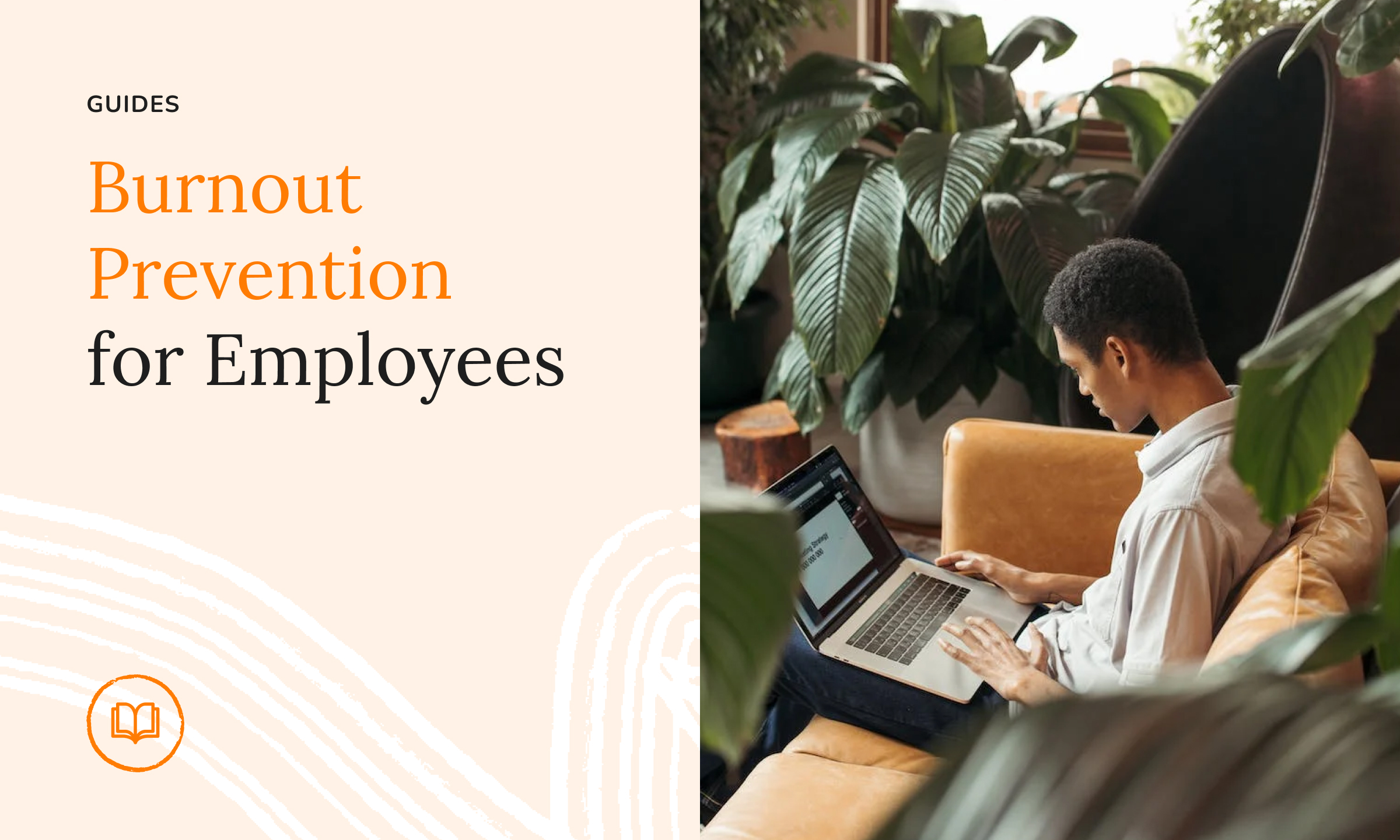There are three buttons on your desk to save your company. One says, “Three months of high profit!” One says, “Hire the best in the business!” And one says, “Burnout prevention!” Do you know which button is going to ultimately boost your performance and see your company succeed? That’s right – it’s button number three, burnout prevention.
Three months of hard work and high profit will take its toll on your team if they’re not properly cared for. The best employee in the world can burn out – indeed, high-performing and dedicated individuals are often uniquely at risk. To ensure a successful and sustainable team, burnout prevention is key. So let’s press that button at your company now!

In today’s fast-paced and demanding work environments, burnout has become a significant concern for employees and organizations alike and burnout prevention for employees is a crucial skillset for anyone working in HR or leadership. In two recent studies, employee burnout levels were found to be between 77% and 89%. Burnout is expensive for organizations, leading to high turnover and poor performance, and it wreaks havoc on the mental and physical health of employees suffering from it.
Recognizing the detrimental impact of burnout on productivity, engagement, and employee well-being, HR professionals and leaders must take proactive measures to prevent and address this issue. In this article we’ll delve into what burnout is, how employers can measure it, the risks it poses, and most importantly, strategies to prevent burnout before it begins and effectively deal with it when it occurs.
Understanding Burnout
Burnout refers to a state of physical and emotional exhaustion resulting from chronic workplace stress. It is characterized by feelings of cynicism, detachment, and a reduced sense of accomplishment. To effectively address burnout, it is crucial to understand its causes and symptoms. Common contributors include heavy workloads, lack of control, insufficient support, and a mismatch between an employee’s values and organizational culture.
Measuring Burnout
Accurately measuring burnout is essential for identifying at-risk employees and implementing targeted interventions. Several validated assessment tools can help employers gauge the level of burnout within their workforce. The Maslach Burnout Inventory (MBI) is widely recognized and measures emotional exhaustion, depersonalization, and reduced personal accomplishment. Additionally, regular employee surveys, focus groups, and open communication channels can provide valuable insights into employee well-being and potential burnout indicators.
The Risks of Burnout
Burnout poses significant risks to both employees and organizations. High levels of burnout are associated with increased absenteeism, decreased job satisfaction, reduced productivity, higher turnover rates, and elevated healthcare costs. Employee disengagement has been estimated by Gallup to cost $3,400 out of every $10,000 in salary. Employees experiencing burnout are also 63% more likely to take a sick day, 13% less confident in their performance at work and 2.6 times more likely to be actively seeking a new job. The financial implications of burnout are staggering, with estimated costs ranging from $125 to $190 billion per year in healthcare spending and productivity losses in the United States alone.
Burnout Prevention for Employees: Actionable Tactics
Now that you know how important it is to stop burnout, here are some strategies you can implement to ensure burnout prevention for employees is prioritized in your company.
- Foster a Supportive Work Culture: Encourage work-life balance, promote flexible working arrangements, and provide resources for managing stress. Ensure that employees have access to counseling, mental health resources, and training on stress management techniques.
- Clarify Roles and Expectations: Clearly define job responsibilities, set realistic goals, and establish open lines of communication to manage expectations. Regularly review workload distribution and make adjustments as needed to prevent excessive pressure on individuals.
- Encourage Autonomy and Decision-Making: Empower employees to make decisions and have a sense of control over their work. Provide opportunities for skill development, growth, and recognition to enhance motivation and engagement.
- Promote Social Support: Foster a sense of community and camaraderie among employees. Encourage team-building activities, peer recognition programs, and supportive networks to create a positive work environment.
Dealing with Burnout
When burnout happens, it’s crucial to respond well. This ensures that burnout can be directly addressed and resolved as quickly and smoothly as possible. Here are steps you can take when an employee is experiencing burnout:
- Early Intervention: Train managers to recognize the signs of burnout and address them proactively. Encourage open and honest conversations with employees, offering support and resources when needed.
- Modify Workloads and Responsibilities: Adjust workloads, redistribute tasks, and consider temporary assistance or role rotation to alleviate burnout. Focus on creating realistic expectations and achievable goals.
- Encourage Time Off and Recovery: Encourage employees to take regular breaks, vacations, and utilize available time-off benefits. Promote the importance of self-care and stress management techniques.
- Provide Access to Support Services: At nilo.health, supporting employees (and the companies they work for) is our whole mission. We know first hand how important an employee mental health benefit can be. We support people before it’s too late: 85% of users use nilo.health for preventative reasons. And it works. 71% of users struggling with stress improve after using nilo.health. Find out how nilo.health can support your team today.
Prioritizing employee well-being and proactively addressing burnout is crucial for organizations to sustain a healthy and engaged workforce. By implementing preventive measures, such as fostering a supportive work culture, clarifying roles and expectations, promoting autonomy, and encouraging social support, employers can significantly reduce the risk of burnout. Additionally, recognizing the signs of burnout and providing timely support and resources can aid in the recovery process. Together, HR professionals and leaders can create a workplace environment that promotes employee well-being, productivity, and long-term success.
Don’t forget to seek support
“nilo.health is the leading provider in the burnout prevention market,” says psychiatrist Dr. Simon Senner. “nilo provides proactive and evidence-based support to employees, enabling them to address stressors early before they accumulate.”







